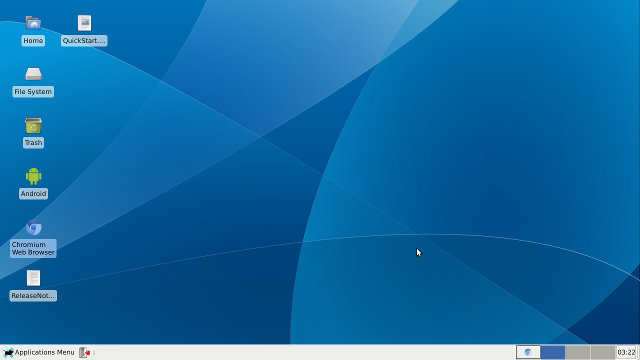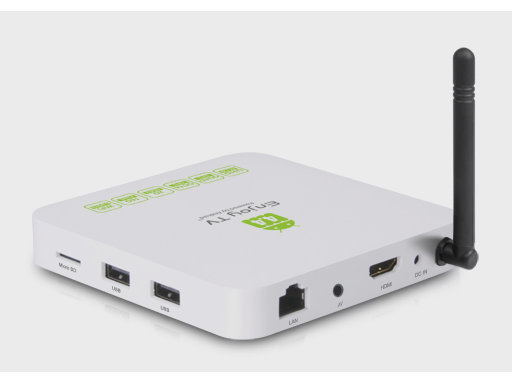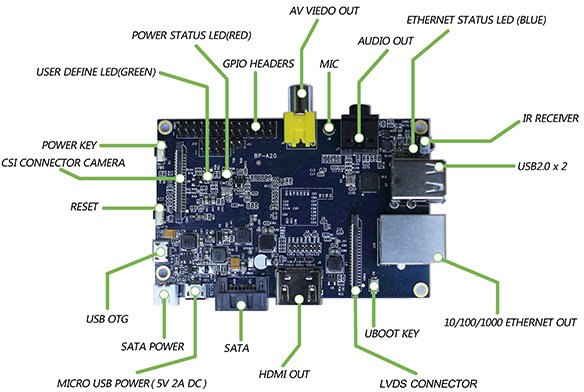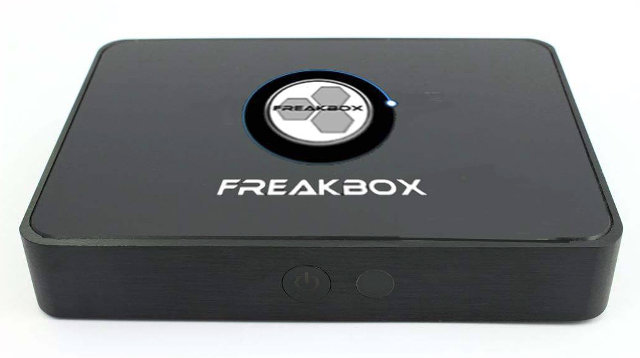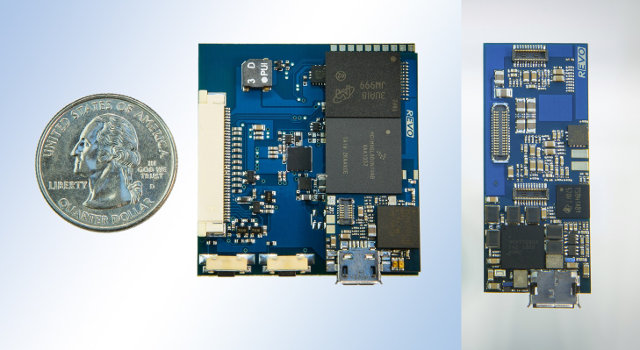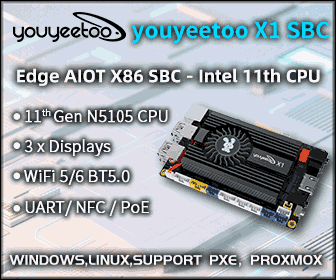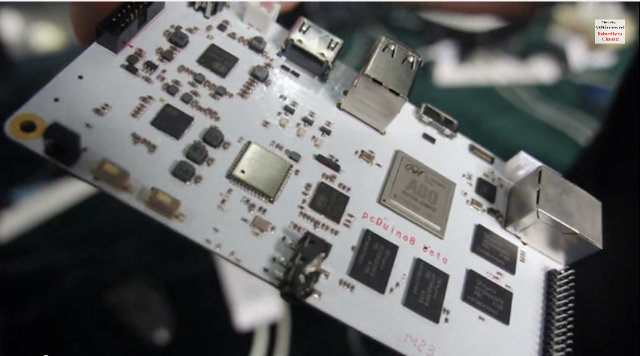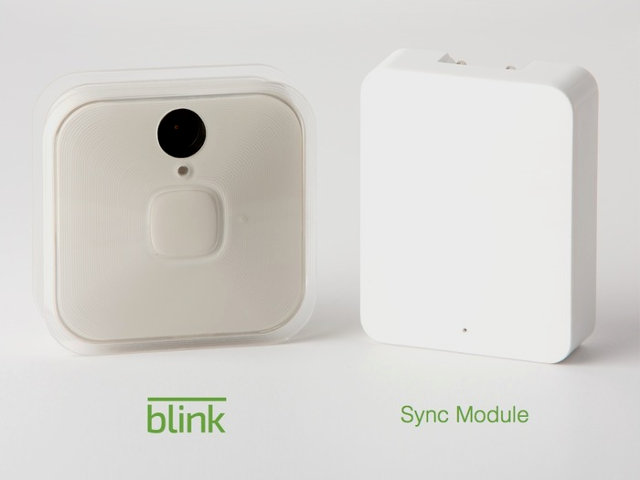Earlier this week, I wrote about VolksPC mini PC running Debian and Android simultaneously, and the developers decided to send me a unit for testing. The hardware I received is the popular MK808 mini PC based on Rockchip RK3066 with 1Gb RAM, and 8 GB RAM, but loaded with MicroXwin unified distribution. MicroXwin is an implementation of Windows X that’s not using a client/server protocol, for instead communicates directly with the drivers for better performance, especially on low-end hardware. I connected MK808 to my HDMI TV, added a USB hub to connect a USB keyboard as well as Mele Air Mouse, and powered up the device. The boot to Debian takes about 30 seconds, and 50 seconds for Android. As you boot it will enter in Debian with XFCE desktop environment, and you’ll notice two files, namely the Quick Start Guide and Release Notes that explain how to get started […]
Geniatech Unveils ATV585 Enjoy TV Box Powered by Amlogic S805 with HEVC Hardware Decoding
After Eny Techology EM6Q-MXQ, there’s at least another Amlogic S805 based media player with Geniatech ATV585 Enjoy TV powered by the quad core Cortex A5 processor, with 1GB RAM and 8GB flash. Compared Amlogic S802 based STBs, you’ll get slower CPU and GPU performance, and lose 4K video decoding and output, but gain HEVC hardware decoding up to 1080p, if you’re lucky, you’ll get Gigabit Ethernet, and in theory, the price should be cheaper. ATV585 Enjoy TV specifications: SoC – Amlogic S805 quad core Cortex-A5 @ 1.5GHz with quad core Mali-450MP4 GPU @ 600MHz System Memory – 1GB DDR3 Storage – 8GB eMMC FLASH + micro SD/MMC card slot up to 32GB Video & Audio Output – HDMI 1.4 and CVBS Video Codecs / Containers – MPEG1/2/4, H.264, H.265, VC-1, WMV, AVI, MKV, MOV, etc… Audio Formats – MP3, WMA, AAC, etc… Connectivity – 10/100M Ethernet, Wi-Fi with external antenna […]
Lemaker.org is Giving Away Banana Pi Development Boards to Developers and Fans
Banana Pi is a development board powered by AllWinner A20 dual core SoC with 1GB RAM, and with expansion headers and a form factor very similar to the Raspberry Pi. It can run Debian, Lubuntu, Android 4.2, Arch Linux ARM, Scratch OS, and OpenSuse, but Lemarker.org community would like more educational materials such as open source software or hardware projects, tutorials, etc.., so they’ve launched a program to give away boards to developers and people who can help writing and maintaining documentation. There are three categories of projects: STEAM – “Science, Technology, Engineering, Art & Mathematics” educational, open source projects running on the the Banana Pi Hardware or Software Project – Open source projects based on Banana Pi which could be helpful to the community, including open source hardware peripherals projects; Banana Pi Fans – You don’t need to be as technical as for the two others categories, but you […]
Firefly-RK3288 Development Board To Support Android and Lubuntu
We’ve already got a long list of upcoming Rockchip RK3288 based Android media players, but no low cost development boards have been announced to date. We can certainly expect a Radxa Rock 2 board with the Cortex A17 processor, but it might not be the only one, as Firefly-RK3288 development board powered by Rockchip RK3288 is currently being developed by another Chinese team. Current specifications for Firefly-RK3288 board: SoC – Rockchip 3288 quad core ARM Cortex A17 up to 1.8 GHz with Mali-T764 GPU supporting OpenGL ES 1.1/2.0 /3.0, and OpenCL 1.1 System Memory – 2G DDR3 Storage – 8GB eMMC flash + micro SD slot Video I/O HDMI 2.0 up to 3840×2160@60p VGA out (D-SUB connector) VGA in is available via the expansion headers. LCD, MIPI and LVDS Audio Output / Input – HDMI, optical S/PDIF, microphone header, and built-in MIC Connectivity – Gigabit Ethernet, dual band 802.11 b/g/n Wi-Fi with external antenna, and Bluetooth […]
FreakTab Community Introduces Freakbox Android TV Box Powered by Rockchip RK3188
FreakTab is a community of developers and users focusing on Android tablets, smartphones and especially mini PCs. Users will get answer to their technical problems, and developers such as Finless or Neonode, will release improved custom “ROMs” for more popular devices. But instead of simply working on other product’s firmware, the main contributors on Freaktab have apaprently decided to work together on the Freakbox Project, an Android TV Box powered by Rockchip RK3188 quad core SoC. Freakbox Project hardware specifications: SoC – Rockchip RK3188 Quad core ARM Cortex A9 processor @ 1.6GHz with Mali-400MP4 GPU System Memory – 2GB DDR3 Storage – 8GB to 16 GB NAND Flash + SD slot up to 32GB Video Output – HDMI 1.4, AV output (3.5mm jack) Audio I/O – HDMI, AV, and S/PDIF Connectivity – 10/100M Ethernet, dual band WiFi 802.11 b/g/n with external antenna, and Bluetooth 4.0 USB – 3x USB 2.0 […]
Freescale WaRPBoard Reference Platform for Wearables is Now Available for Pre-order
Back in January, Freescale announced WaRP (Wearable Reference Platform) comprised of the WaRPboard, a tiny board based on Freescale i.MX 6SoloLite running Android, and a daughter board with KL16 Cortex M0+ MCU and several sensors. The company collaborated with Revolution Robotics for the hardware design, and Kynetics for the software, and the platform is now available for pre-order for $149, and a few more details have surfaced since my first article. The hardware specifications of WaRP are as follows: WaRPboard: SoC – Freescale i.MX 6SoloLite Cortex A9 processor @ 1GHz with 2D graphics Vivante GC355 and GC320 GPUs. System Memory – LPDDR2 (Micron Multi-Chip Package) Storage – 4Gbit eMMC (Same Micron MCP chip as for RAM) Connectivity – WLAN and Bluetooth 4.0 LE via Murata LBEH17YSHC Display I/F: MIPI DSI for LCD display + touchscreen EPCD for E-Ink Display Sensors – Xtrinsic FXOS8700CQ, 6-Axis Sensor with Integrated Linear Accelerometer and Magnetometer. Daughtercard: […]
PcDuino8 Octa-core Development Board Revealed (Video)
Two AllWinner A80 powered development boards are currently expected. We’ve already seen some pictures of the Cubieboard8, and today we can gt more details about PcDuino8 development board thanks to Charbax who visited Linksprite, and interviewed the company. Here are PcDuino8 (Beta) specifications based on the interview and pictures: SoC – AllWinner A80 octa core big.LITTLE processor with 4 ARM Cortex A15 cores, 4 Cortex A7 cores, and Imagination PowerVR G6200 GPU System Memory – 1GB Storage – 4GB flash + micro SD Card slot Video Output – HDMI Audio Output – HDMI, stereo audio jack Connectivity – Gigabit Ethernet, Wi-Fi 802.11 b/g/n + Bluetooth 4.0 (AP6330 module) USB – 2x USB 2.0 host ports, 1x Micro-B USB 3.0 port Debugging – 14-pin header for JTAG Expansion Header – 32-pin header Misc – IR receiver Power – Round DC power jack (5V?) The hardware specs are a bit lower compared […]
Immedia Blink Battery Powered HD Security Camera Lasts Over One Year on Batteries (Crowdfunding)
There are plenty of security systems with IP cameras selling on the market, but they can be a pain to install because you need to use long power cables or use power extensions. There are battery-free such as NETGEAR VueZone Home Video Monitoring System that cost $259 with 6-month battery life for normal usage, and $50 yearly subscription fee. Immedia Semi is providing an alternative with Blink, a wire-free (wireless + battery) HD Home Monitoring & Alert System that starts at $69 with one camera, and is said to last over one year powered by two CR123 batteries, without monthly fees, and can stream live views and video recordings to your Android or iOS smartphone or tablet, or any web browser. The one-year battery claim seems preposterous. How is that possible? The first reason it’s possible is because of the way typical usage is defined for home security cameras. They […]


